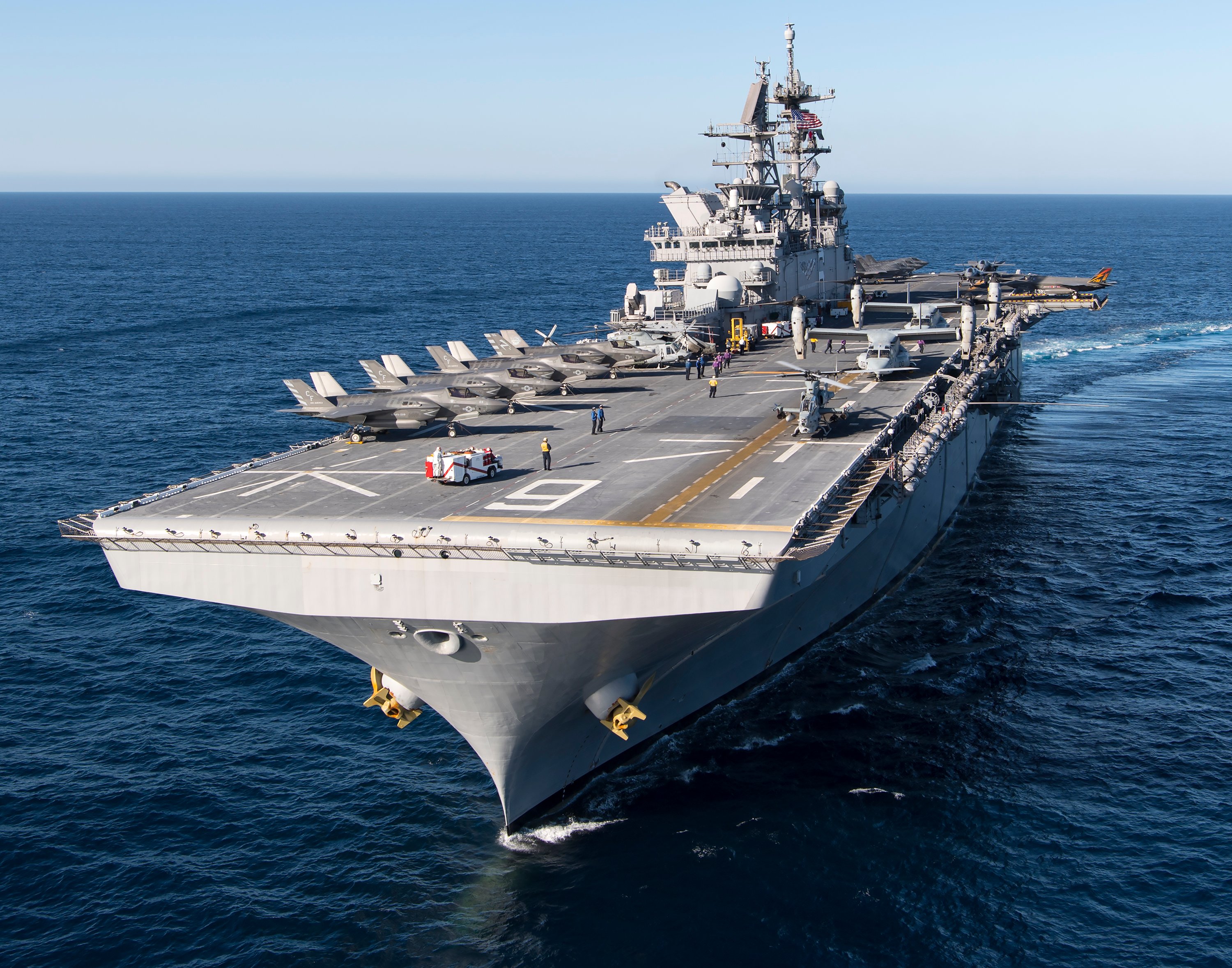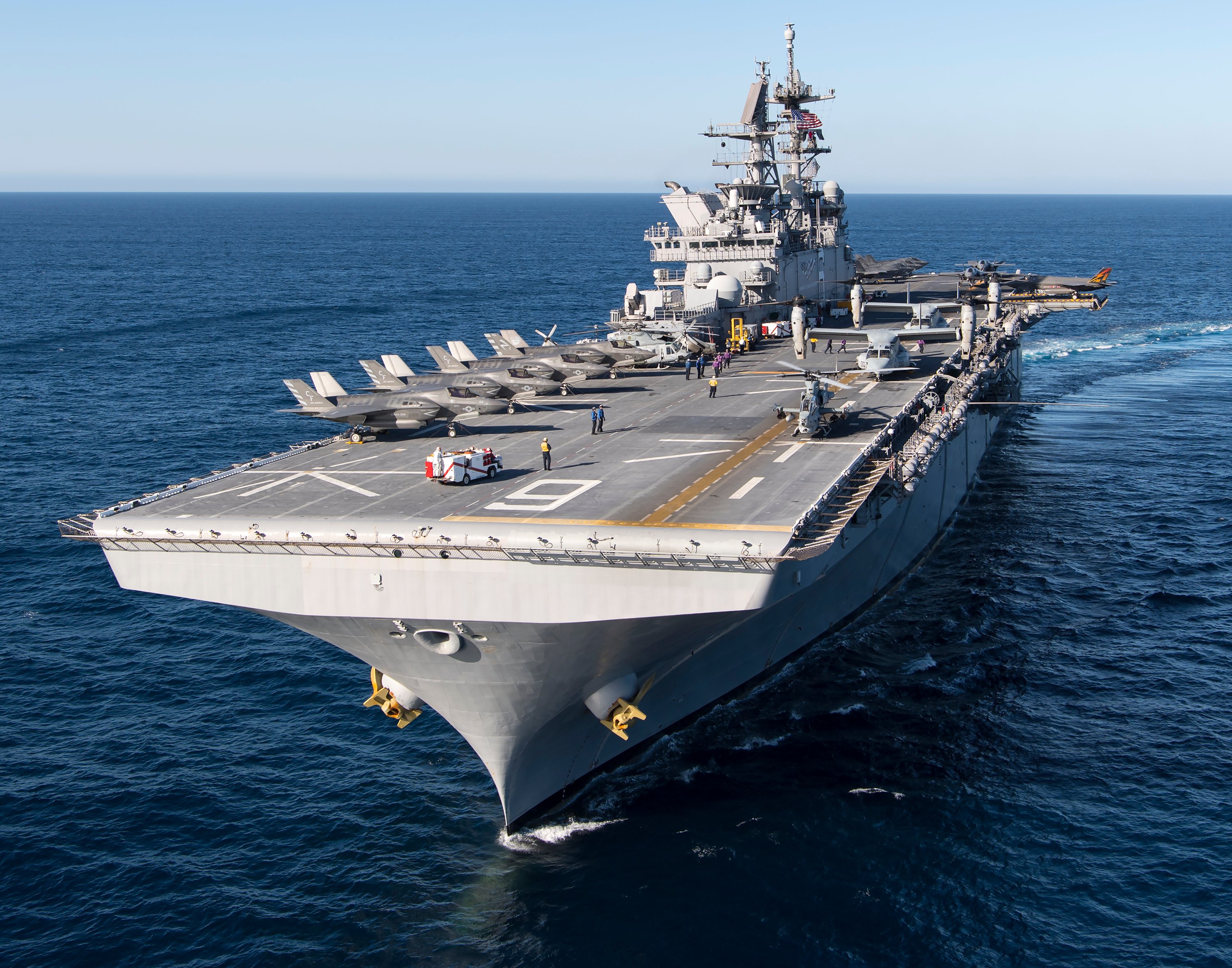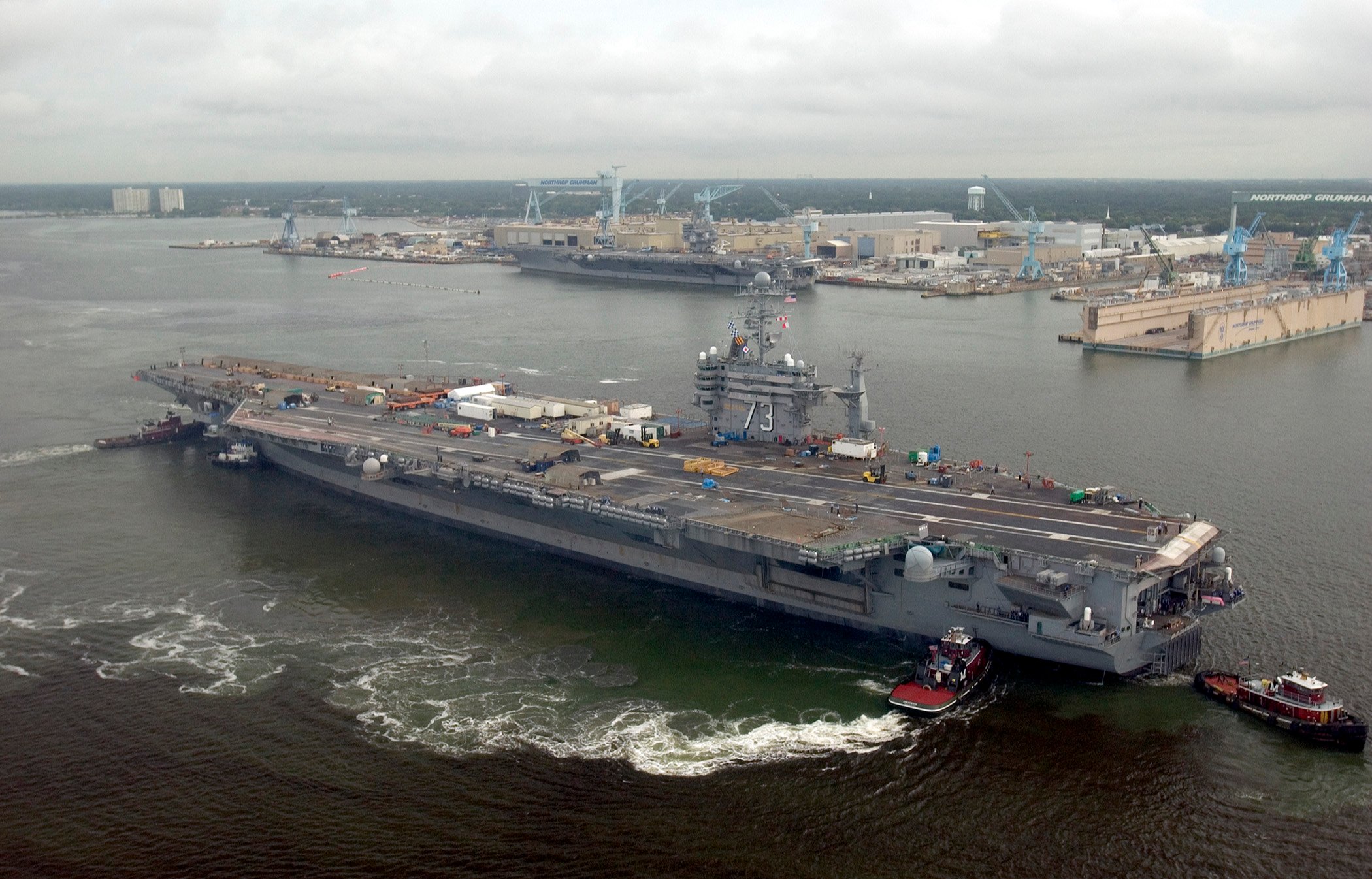Shipbuilding specialist Huntington Ingalls (HII 3.58%) for years has advocated ordering new warships in groups as a way to bring down costs for the Pentagon while making the company's operations more efficient. It appears those arguments are finally gaining traction in Washington.
The U.S. Navy has asked Huntington Ingalls for detailed pricing on the cost of two aircraft carriers, including specifics on what cost savings could be achieved should the government commit to two ships at once and allow the company to make block purchases of components and raw materials. There is also the potential for savings in terms of hours of labor if workers can simultaneously assemble two different vessels.

The USS Gerald R. Ford, the aircraft carrier built in Newport News, Va. Image source: Huntington Ingalls.
The request comes as the Navy is looking to expand, but has not yet figured out how to pay for all the new ships it wants to purchase. The Navy intends to expand its number of deployed aircraft carriers by one to 12 as part of a broader plan to grow the fleet. Huntington Ingalls' Newport News shipyard in Virginia is the sole U.S. manufacturer of carriers, and is currently working on the second hull in the Navy's latest-generation Gerald R. Ford class supercarrier.
The Pentagon has not yet committed to buying two more carriers at once, but for now is just exploring whether such a plan would generate significant savings.
"This opportunity for a two-ship contract is dependent on significant savings that the shipbuilding industry and government must demonstrate," James Geurts, assistant secretary of the Navy for research, development, and acquisition, told reporters on March 20.
A long-term goal for Huntington
Huntington Ingalls CEO Mike Petters has been a vocal proponent of so-called "multiship procurement strategies," arguing as recently as November that buying in bulk would be "the smartest way to buy the programs that we have."
That might have been a tough sell in years past as the USS Gerald R. Ford, the first carrier of the new class, was well on its way to becoming the most expensive warship in history while being delivered nearly three years behind schedule. The second carrier, the USS John F. Kennedy, is now about 68% structurally complete and 40% complete overall, and Huntington Ingalls has said that the lessons learned from building the Ford have been incorporated into its current operations in the hopes of improving the process.
"Because we are executing well, there's a lot of reception to those discussions," Petters said back in November.
The Navy has used two-ship procurement strategies for carriers in the past, committing to Nimitz-class vessels two at a time in the 1980s. But in recent years, the Pentagon has been more cautious when committing to new ships.
Obviously, there is a limited market for carriers. The hope for Huntington Ingalls is to use this project to demonstrate the cost advantages of multiship procurement across the entire fleet -- and in doing so, secure bulk orders of other ships including LXR-class amphibious vessels, Arleigh Burke-class destroyers, and Virginia-class submarines.
For investors, clarity and confidence
Times are good for Huntington Ingalls investors, with shares up 9% year to date on growing optimism that the Pentagon is serious about renewing and growing the fleet. After predicting flat revenues through 2020 as recently as November, Petters in February told investors that he could envision top-line growth of approximately 3% over the next five years.
Multiship procurement, even on big-ticket items like carriers, is not likely to dramatically move the needle or push growth into double digits. But any efficiencies or cost savings that can be leveraged by busier production lines and bulk material purchases should benefit Huntington Ingalls -- if nothing else, making it easier for the company to achieve its 9% to 10% long-term margin goals. And investors would enjoy the certainty that comes with commitments to buy more ships.
Perhaps most important for Huntington Ingalls investors, a multiship procurement would be an affirmation that the Navy is pleased with the work the company is doing. Given the nature of Huntington Ingalls' business and its reliance on a single customer for the vast majority of its revenue, sustaining the confidence of the Navy might be the company's most crucial task.
There's plenty of work out there for shipbuilders. Huntington Ingalls' long-term goal is to make sure it gets more than its fair share of that future business.






